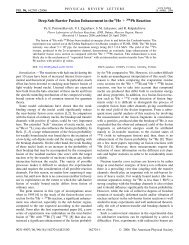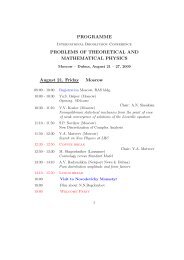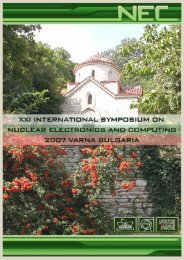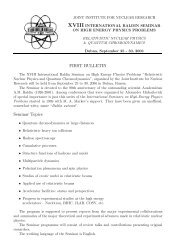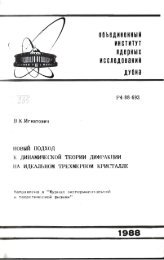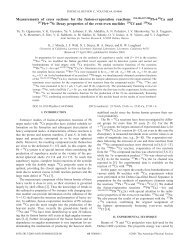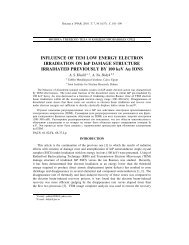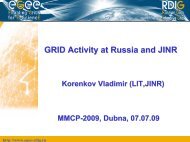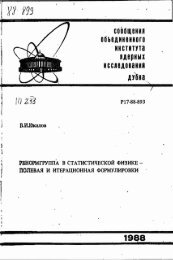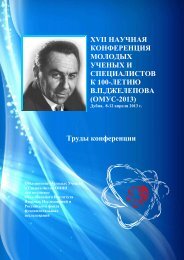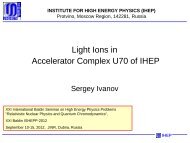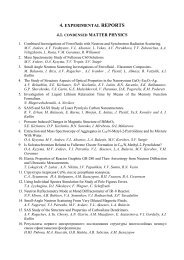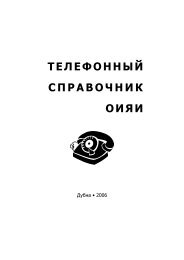Joint Institute for Nuclear Research Relativistic ... - Index of - JINR
Joint Institute for Nuclear Research Relativistic ... - Index of - JINR
Joint Institute for Nuclear Research Relativistic ... - Index of - JINR
Create successful ePaper yourself
Turn your PDF publications into a flip-book with our unique Google optimized e-Paper software.
ANALYSIS OF DIFFERENCES ON PSEUDORAPIDITY MULTIPLICITIES<br />
SPECTRUM AT LHC AND UA1/UA5 EXPERIMENTS<br />
Alexandr Dmitriev<br />
Novgorod State University<br />
ATLAS experiment measured lower transverse momentum spectrum <strong>of</strong> charged<br />
particle multiplicity <strong>for</strong> proton-proton collisions at 900 GeV e.c.m. than UA1 experiment <strong>for</strong><br />
proton-antiproton collisions at same energy. CMS and ALICE experiments confirmed ATLAS<br />
measures. This effect is in clear disagreement with most models, but was predicted by low<br />
constituent model.<br />
Difference between multiplicities was estimated as 20% from analysis <strong>of</strong> transverse<br />
momentum spectrum. This value has large uncertainty and need to be improved.<br />
To improve estimation <strong>of</strong> proton-proton and proton-antiproton multiplicity difference,<br />
one should use not only transverse momentum spectrum, but pseudorapidity multiplicities<br />
spectrum. Straight<strong>for</strong>ward comparison <strong>of</strong> ATLAS and UA1/UA5 data is impossible because<br />
<strong>of</strong> significantly different kinematic regions <strong>of</strong> data.<br />
Common parametrizations <strong>of</strong> transverse momentum spectrum were applied in this<br />
work to make comparison between ATLAS and UA1/UA5 data. Another applied way to<br />
compare data is PYTHIA based parametrisations, then one gets transverse momentum<br />
spectrum at low momentum from generated particles distributions. Improved estimation <strong>of</strong><br />
proton-proton and proton-antiproton multiplicity difference is consistent with low constituent<br />
model.<br />
This work is supported by RFBR grant 11-02-01395-a.<br />
42



